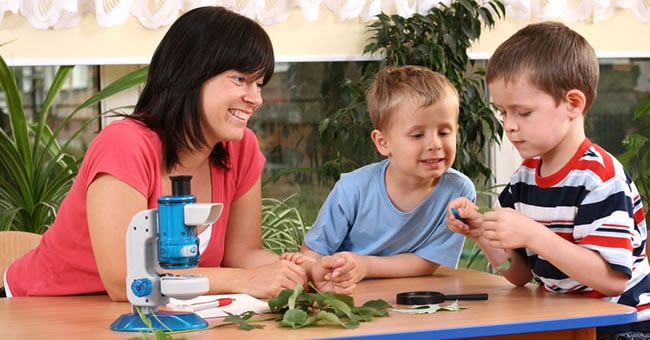
Intentionality and intentional teaching have become a major focus in the education world, but the terms and their influence in education are still vague or unfamiliar to some people. So, what does intentionality actually mean and how does one teach intentionally?
Intentionality means something is done on purpose or deliberately. For teachers, this means that you understand why you are doing something and that you have a plan and purpose for everything you do, everything you have in your classroom, and everything you put in your lesson plans. Consciously planning activities and learning experiences with a deliberate and specific objective in mind will help you meet children's needs and will help them learn and grow.
One way you can create an intentional classroom environment is to focus on providing children opportunities for high-level play instead of the low-level play often seen in early childhood classrooms and programs. As explained by our professional development team, higher-level play involves sustained pretend scenarios, multiple roles, symbolic use of props, and planning (for both the teacher and the child). Encouraging pretend play and supporting children's play efforts instead of directing them will provide young children with plenty of opportunities for high-level play and will also foster an intentional and rich learning environment.
An example of intentional teaching and high-level play that our professional development team likes to use in their presentations about intentionality is how Valentine's Day is taught and celebrated in early childhood classrooms. Teachers mainly talk about the "I love you" heart and have a variety of heart arts and crafts for children to do, which are all examples of low-level play. A way you can incorporate opportunities for high-level play is by also talking about the real heart.
The teacher in this example asked the preschool children in her class what they already knew about the heart inside of them and then had a local veterinarian come speak to the children about how both animals and people have hearts. The veterinarian brought in a dog heart and a cat heart for children to see, which led to discussions on eating healthy when children saw the fat around the hearts and wanted to know how it got there. The children learned a lot more information from this activity than they did from the typical Valentine's Day arts and crafts activities.
Taking low-level activities and finding ways to incorporate high-level play is a great way to start creating a more intentional classroom environment. Browse our website for more high-level play ideas, and be sure to contact our professional development team if you would like to learn more about intentionality or other education topics.
